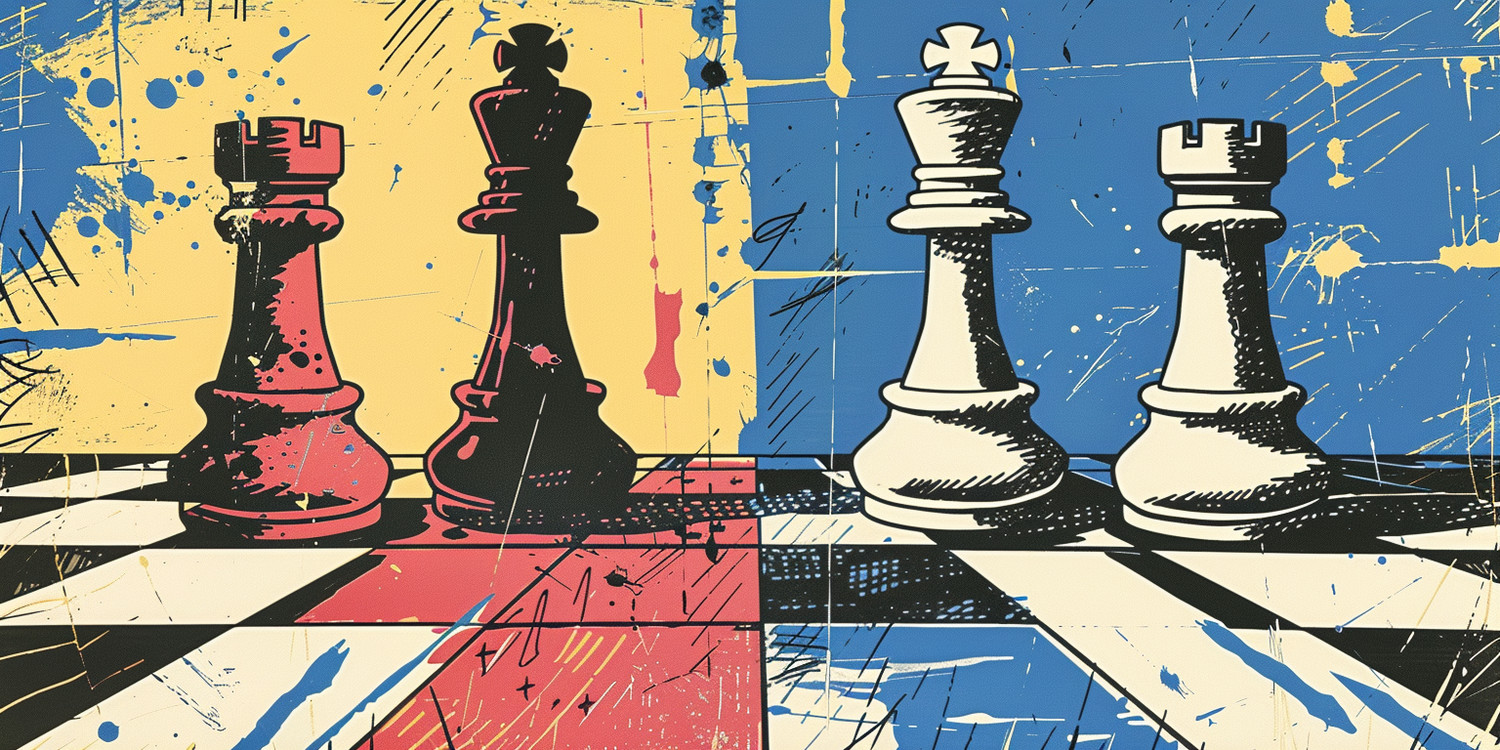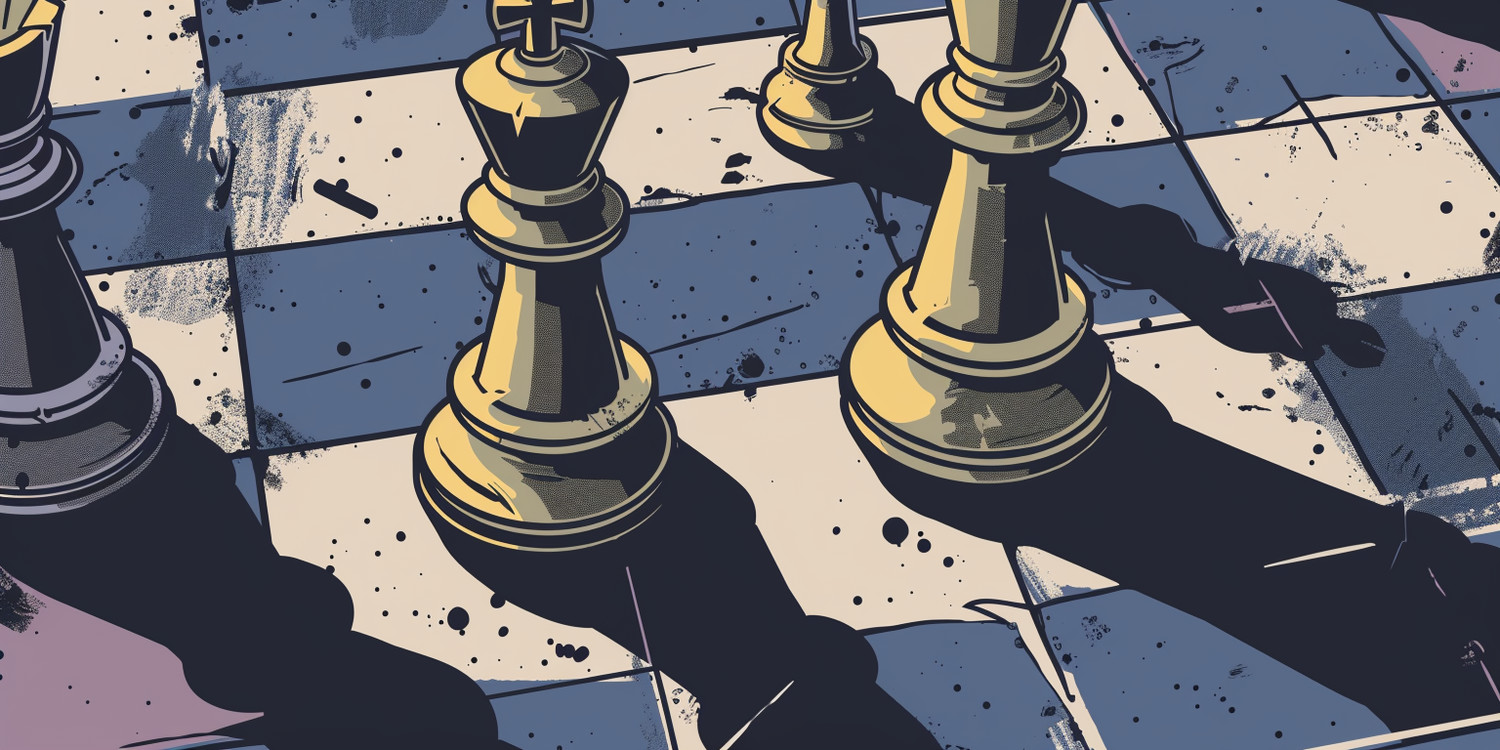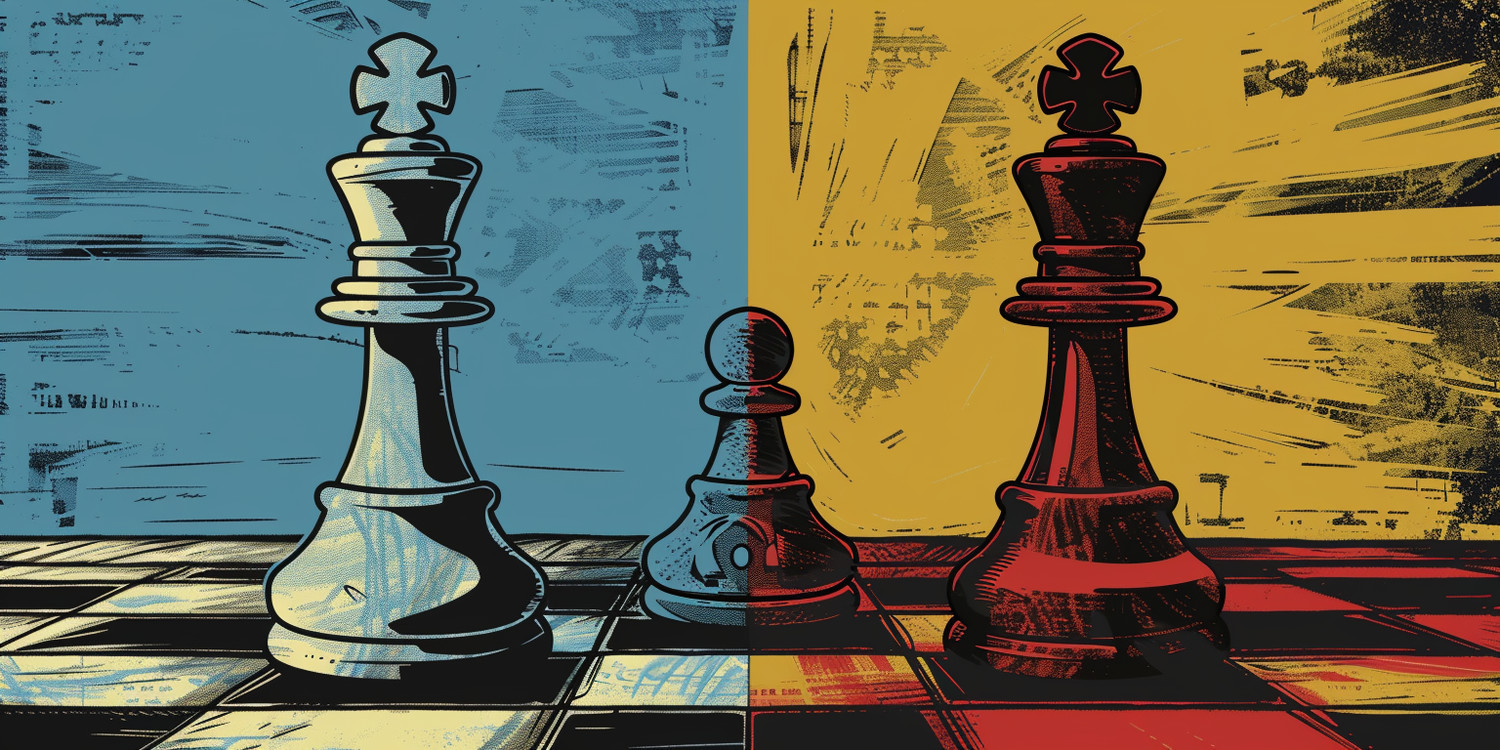
Chess puzzles are an essential instrument for augmenting tactical acumen, calculation proficiencies, and pattern discernment. Engaging with puzzles refines the capacity to identify and implement advantageous maneuvers, thereby enhancing overall gameplay and strategic aptitude.
Puzzle 1: Tactical Motif Combination
This inaugural puzzle serves as an exercise in the synthesis of multiple tactical motifs. The objective is to identify a sequence of moves that capitalizes on the convergence of disparate tactical elements, such as pins, forks, skewers, and discovered attacks. Proficiency in recognizing and combining these motifs is paramount for executing complex combinations and gaining a decisive advantage in practical play. The puzzle necessitates a comprehensive evaluation of the board state, discerning potential vulnerabilities, and calculating the ramifications of each move with precision. Successful resolution hinges on the ability to envision the interplay of various tactical devices, culminating in a forced sequence that yields material gain or a superior positional advantage. This exercise aims to cultivate the chess player’s capacity to perceive intricate tactical interdependencies and orchestrate multifaceted combinations, thereby fostering a deeper understanding of tactical intricacies and enhancing calculational prowess. Furthermore, it encourages the development of pattern recognition skills, enabling the rapid identification of recurring tactical themes in diverse board configurations. Mastery of tactical motif combination is a cornerstone of proficient chess play, empowering players to exploit tactical opportunities and navigate complex tactical landscapes with assurance. The ability to seamlessly integrate multiple tactical ideas is indicative of advanced tactical understanding and strategic depth, contributing significantly to overall chess proficiency and competitive success. Therefore, diligent practice and thorough comprehension of tactical motif combinations are indispensable for aspiring chess players seeking to elevate their game to a higher level of tactical sophistication and strategic mastery.
Puzzle 2: Checkmate Pattern Recognition

This puzzle focuses specifically on the crucial skill of checkmate pattern recognition, a cornerstone of tactical proficiency in chess. The task presented requires the solver to swiftly identify recurring checkmating configurations and execute the precise sequence of moves necessary to deliver checkmate. Mastering these patterns allows players to rapidly assess critical positions and capitalize on opportunities to force a checkmate, thus securing victory. The exercise involves recognizing common checkmate themes, such as smothered mates, back-rank mates, and various mating nets, each characterized by unique piece placements and tactical prerequisites. Proficiency in recognizing these patterns enables players to anticipate and exploit vulnerabilities in the opponent’s king position, leading to decisive attacks. The puzzle necessitates keen observation, precise calculation, and a thorough understanding of checkmating motifs. Successful completion hinges on the ability to identify the key pieces involved in the checkmate, assess the defensive resources available to the opponent, and calculate the forcing sequence that leads to inescapable checkmate. This exercise aims to cultivate the chess player’s capacity to rapidly recognize checkmating opportunities and execute them with precision, thereby enhancing tactical awareness and improving overall game performance. Furthermore, it promotes the development of pattern recognition skills, enabling the swift identification of recurring checkmating themes in diverse board configurations. Mastery of checkmate pattern recognition is essential for proficient chess play, empowering players to exploit tactical opportunities and secure decisive victories. The ability to seamlessly identify and execute checkmating patterns is indicative of advanced tactical understanding and strategic depth, contributing significantly to overall chess proficiency and competitive success. Therefore, diligent practice and thorough comprehension of checkmate patterns are indispensable for aspiring chess players seeking to elevate their game to a higher level of tactical sophistication and strategic mastery.
Puzzle 3: Endgame Tactics for Beginners
This puzzle is specifically designed to introduce beginner chess players to the fundamental tactical concepts that are prevalent in endgames. Endgames often present unique tactical opportunities due to the reduced material on the board, which can lead to clear-cut winning strategies. The objective of this exercise is to familiarize novice players with essential endgame tactics, such as king activity, pawn promotion, opposition, and triangulation. These tactics are crucial for navigating simplified positions and converting advantages into victories. The puzzle presents scenarios where the correct sequence of moves will lead to pawn promotion, forcing a checkmate, or gaining a decisive positional advantage. Beginners will learn how to effectively utilize their king to support pawns, control key squares, and restrict the opponent’s king. Understanding the concept of opposition, where the kings directly face each other with an odd number of squares between them, is also critical for controlling key squares and maneuvering for pawn breakthroughs. The exercise necessitates careful calculation and an understanding of basic endgame principles. Successful completion hinges on the ability to visualize the consequences of each move several steps ahead and to identify the optimal path to achieving a favorable endgame outcome. This exercise aims to cultivate the chess player’s capacity to recognize and execute basic endgame tactics, thereby enhancing their ability to navigate simplified positions and convert advantages into wins. Furthermore, it provides a solid foundation for understanding more complex endgame concepts. Mastery of these fundamental endgame tactics is essential for any aspiring chess player, empowering them to confidently approach endgames and maximize their chances of success. The ability to effectively utilize king activity, pawn promotion, and opposition is indicative of a solid understanding of endgame principles, contributing significantly to overall chess proficiency and competitive success. Therefore, diligent practice and thorough comprehension of these basic endgame tactics are indispensable for beginner chess players seeking to improve their endgame skills and achieve better results in their games.
Puzzle 4: Positional Advantage Exploitation

This puzzle concentrates on the strategic imperative of exploiting positional advantages, a critical facet of chess mastery beyond mere tactical calculation. The objective is to identify and leverage subtle positional superiorities to achieve a decisive advantage, often without immediate tactical resolution. These advantages can manifest in various forms, including superior pawn structure, control of key squares or files, better piece activity, or a more secure king position. The puzzle challenges the solver to formulate a plan that capitalizes on these subtle advantages, gradually improving their position and restricting the opponent’s options. This often involves prophylactic measures to prevent counterplay, strategic piece maneuvering to control critical areas of the board, and the creation of weaknesses in the opponent’s position. The exercise necessitates a deep understanding of chess principles, strategic thinking, and the ability to assess long-term consequences. Successful completion hinges on the ability to identify the relevant positional advantages, formulate a coherent plan to exploit them, and execute that plan with precision and patience. This exercise aims to cultivate the chess player’s capacity to recognize and leverage positional advantages, thereby enhancing their strategic thinking and improving their overall game performance. Furthermore, it promotes the development of a more profound understanding of chess principles and long-term planning. Mastery of positional advantage exploitation is essential for advanced chess play, empowering players to gain and maintain the upper hand in complex strategic battles. The ability to seamlessly integrate positional considerations into tactical calculations is indicative of advanced strategic understanding and chess maturity, contributing significantly to overall chess proficiency and competitive success. Therefore, diligent study and thorough comprehension of positional chess principles are indispensable for aspiring chess players seeking to elevate their game to a higher level of strategic sophistication and achieve consistent success in their chess endeavors. By focusing on the subtle nuances of positional play, players can develop a more comprehensive and nuanced understanding of the game, leading to improved decision-making and superior results.
Puzzle 5: Calculation and Visualization Training
This puzzle is meticulously crafted to enhance the chess player’s calculational precision and visualization aptitude, two indispensable skills for success in competitive chess. The exercise demands the solver to meticulously calculate a series of moves, envisioning the resulting board states several steps ahead, without physically manipulating the pieces. This mental exercise strengthens the neural pathways responsible for spatial reasoning and pattern recognition, thereby improving the player’s ability to anticipate and evaluate complex tactical sequences. The puzzle presents positions that require multi-move calculations, often involving forced variations and critical decision points. Successful resolution necessitates the ability to accurately visualize the board after each move, accounting for piece movements, pawn structures, and potential threats. This process not only improves calculational accuracy but also enhances the player’s overall board awareness and strategic understanding. The exercise aims to cultivate the chess player’s capacity to calculate deeply and visualize accurately, thereby enhancing their tactical prowess and strategic decision-making. Furthermore, it promotes the development of mental discipline and concentration, essential attributes for success in high-pressure chess environments. Mastery of calculation and visualization is paramount for advanced chess play, empowering players to navigate complex tactical landscapes and make informed decisions under pressure. The ability to seamlessly integrate calculation and visualization into the decision-making process is indicative of advanced chess understanding and mental fortitude, contributing significantly to overall chess proficiency and competitive success. Therefore, diligent practice and consistent engagement with calculation and visualization exercises are indispensable for aspiring chess players seeking to elevate their game to a higher level of tactical sophistication and strategic mastery. By honing these critical skills, players can develop a more comprehensive and nuanced understanding of the game, leading to improved performance and consistent results. The focus on mental training reinforces the importance of cognitive skills in chess, emphasizing the need for focused and deliberate practice to achieve optimal performance.
Puzzle 6: Opening Trap Detection

This puzzle specifically targets the critical skill of opening trap detection, an essential aspect of chess proficiency that can significantly impact the outcome of a game from its earliest stages. The objective is to identify and avoid common pitfalls and tactical traps that opponents may set in the opening phase. These traps often exploit over-eagerness, lack of opening knowledge, or a failure to recognize subtle tactical threats. Recognizing these traps requires a solid understanding of opening principles, tactical awareness, and the ability to anticipate the opponent’s intentions. The puzzle presents positions that arise from various chess openings, each containing hidden traps that can lead to immediate material loss or a strategically compromised position. The solver must carefully analyze the position, identify potential threats, and determine the correct sequence of moves to avoid falling into the trap. This exercise necessitates a thorough understanding of opening theory, tactical calculation, and the ability to anticipate the opponent’s moves. Successful completion hinges on the ability to recognize common opening traps, evaluate the potential consequences of each move, and choose the optimal path to maintain a sound position. This exercise aims to cultivate the chess player’s capacity to recognize and avoid opening traps, thereby enhancing their opening play and improving their overall game performance. Furthermore, it promotes the development of a more profound understanding of opening theory and tactical awareness. Mastery of opening trap detection is essential for successful chess play, empowering players to navigate the opening phase with confidence and avoid early setbacks. The ability to seamlessly integrate opening knowledge with tactical calculation is indicative of advanced chess understanding and strategic depth, contributing significantly to overall chess proficiency and competitive success. Therefore, diligent study and thorough comprehension of opening theory and tactical principles are indispensable for aspiring chess players seeking to elevate their game to a higher level of sophistication and achieve consistent success in their chess endeavors. By focusing on the subtle nuances of opening play, players can develop a more comprehensive and nuanced understanding of the game, leading to improved decision-making and superior results from the very beginning of the game.
Puzzle 7: Defensive Resourcefulness
This puzzle places paramount emphasis on the cultivation of defensive resourcefulness, a critical attribute for any chess player aspiring to excel under pressure. The objective is to identify and implement effective defensive strategies in challenging positions where the opponent holds a clear initiative or material advantage. This requires a combination of tactical acumen, strategic understanding, and a resilient mindset. The puzzle presents scenarios where the solver is under significant pressure, facing imminent threats and limited options. The task is to discover hidden defensive resources, such as tactical counterblows, defensive sacrifices, or resourceful maneuvering, to neutralize the opponent’s attack and maintain a tenable position. This exercise necessitates a thorough evaluation of the board state, identifying potential weaknesses, and calculating the ramifications of each move with precision. Successful resolution hinges on the ability to remain calm under pressure, think creatively, and identify unconventional defensive solutions. This exercise aims to cultivate the chess player’s capacity to defend tenaciously and resourcefully, thereby enhancing their resilience and improving their overall game performance. Furthermore, it promotes the development of a more profound understanding of defensive principles and tactical counterplay. Mastery of defensive resourcefulness is essential for successful chess play, empowering players to weather difficult situations and turn the tide in their favor. The ability to seamlessly integrate defensive considerations into tactical calculations is indicative of advanced chess understanding and strategic depth, contributing significantly to overall chess proficiency and competitive success. Therefore, diligent practice and thorough comprehension of defensive principles are indispensable for aspiring chess players seeking to elevate their game to a higher level of sophistication and achieve consistent success in their chess endeavors. By focusing on the often-overlooked aspects of defensive play, players can develop a more balanced and nuanced understanding of the game, leading to improved decision-making and superior results even when facing adversity. This skill is invaluable for maintaining composure and finding creative solutions in seemingly hopeless situations, ultimately contributing to a more robust and resilient playing style.
Puzzle 8: Sacrificial Attack Execution

This puzzle centers on the daring art of sacrificial attack execution, a captivating and often decisive element of chess strategy. The primary objective is to identify and execute attacks that involve deliberately sacrificing material, typically for the sake of gaining a more significant advantage, such as a swift checkmate, a decisive material gain, or a crippling positional superiority. Executing successful sacrificial attacks demands a high degree of tactical vision, calculational precision, and a willingness to take calculated risks. The puzzle presents positions where a material sacrifice is not only possible but also the most effective, or even the only, path to victory. The solver must carefully analyze the position, assess the potential consequences of the sacrifice, and calculate the ensuing variations with accuracy to ensure that the attack is sound and leads to a favorable outcome. This exercise necessitates a thorough understanding of tactical motifs, combinational play, and the dynamics of attack and defense. Successful resolution hinges on the ability to accurately assess the risks and rewards of the sacrifice, calculate the forcing variations, and maintain control of the attack. This exercise aims to cultivate the chess player’s capacity to recognize and execute sacrificial attacks effectively, thereby enhancing their tactical prowess and strategic initiative. Furthermore, it promotes the development of a more profound understanding of combinational chess and the dynamics of material imbalances. Mastery of sacrificial attack execution is essential for advanced chess play, empowering players to launch devastating attacks and secure decisive victories. The ability to seamlessly integrate sacrificial ideas into tactical calculations is indicative of advanced chess understanding and strategic depth, contributing significantly to overall chess proficiency and competitive success. Therefore, diligent practice and thorough comprehension of tactical principles and combinational motifs are indispensable for aspiring chess players seeking to elevate their game to a higher level of tactical sophistication and achieve consistent success in their chess endeavors. By mastering the art of sacrificial attack, players can unlock a new dimension of attacking chess, turning seemingly quiet positions into dynamic and decisive victories. This skill requires courage, vision, and a deep understanding of the game’s tactical possibilities, allowing players to seize the initiative and dictate the course of the game.
Puzzle 9: Intermediate Level Combination
This puzzle is specifically designed to challenge intermediate-level chess players with complex tactical combinations that require a deeper understanding of chess principles and calculational skills. The objective is to identify and execute intricate sequences of moves that involve multiple tactical motifs and strategic considerations, leading to a decisive advantage. These combinations often require a combination of tactical vision, precise calculation, and the ability to anticipate the opponent’s responses several moves ahead. The puzzle presents positions that demand a thorough evaluation of the board state, identifying potential weaknesses, and calculating the ramifications of each move with precision. The combinations may involve sacrifices, forks, pins, skewers, discovered attacks, and other tactical elements that must be coordinated effectively to achieve the desired outcome. Successful resolution hinges on the ability to recognize complex tactical patterns, calculate forcing variations, and maintain control of the position throughout the combination. This exercise aims to cultivate the chess player’s capacity to recognize and execute complex tactical combinations, thereby enhancing their tactical prowess and improving their overall game performance. Furthermore, it promotes the development of a more profound understanding of chess principles and strategic planning. Mastery of intermediate-level combinations is essential for progressing to a higher level of chess proficiency, empowering players to exploit tactical opportunities and gain a decisive advantage in competitive games. The ability to seamlessly integrate tactical calculations with strategic considerations is indicative of advanced chess understanding and tactical maturity, contributing significantly to overall chess proficiency and competitive success. Therefore, diligent practice and thorough comprehension of tactical principles and strategic planning are indispensable for intermediate-level chess players seeking to elevate their game to a higher level of sophistication and achieve consistent success in their chess endeavors. By mastering these complex combinations, players can develop a sharper tactical vision, improve their calculational skills, and enhance their ability to recognize and exploit tactical opportunities in their games. This level of tactical proficiency is crucial for transitioning from intermediate to advanced play, allowing players to confidently navigate complex positions and secure decisive victories.
Puzzle 10: Advanced Endgame Study

This culminating puzzle delves into the intricate realm of advanced endgame studies, designed to challenge even the most seasoned chess strategists. The objective transcends mere tactical calculation, demanding a profound comprehension of endgame principles, nuanced positional evaluation, and the capacity to execute precise maneuvers across extended sequences. These studies frequently involve seemingly innocuous positions that conceal subtle tactical and strategic depths, requiring a meticulous analysis to unveil the winning path. The puzzle presents positions characterized by minimal material, often involving only kings and pawns or minor piece endgames, where the slightest inaccuracy can irrevocably alter the outcome. The solver must demonstrate mastery of key endgame concepts such as opposition, triangulation, zugzwang, and the creation of passed pawns. Successful resolution hinges on the ability to foresee distant ramifications, calculate with unwavering accuracy, and maintain unwavering precision throughout the entire sequence. This exercise aims to cultivate the chess player’s capacity to navigate the complexities of advanced endgames, thereby enhancing their strategic depth and improving their overall endgame proficiency. Furthermore, it promotes the development of a more profound understanding of chess principles and the subtle nuances of positional play. Mastery of advanced endgame studies is a hallmark of chess excellence, empowering players to convert seemingly drawish positions into victories and navigate complex endgames with unwavering confidence. The ability to seamlessly integrate strategic considerations with tactical calculations in the endgame is indicative of advanced chess understanding and strategic mastery, contributing significantly to overall chess proficiency and competitive success. Therefore, diligent study and thorough comprehension of endgame principles are indispensable for aspiring chess players seeking to elevate their game to the pinnacle of strategic sophistication and achieve consistent success in their chess endeavors. By mastering these advanced endgame concepts, players can transform their endgame play from a potential weakness into a formidable strength, allowing them to consistently outmaneuver their opponents and secure victories in even the most challenging situations. This level of endgame expertise is the hallmark of a truly accomplished chess player, demonstrating a deep understanding of the game’s strategic and tactical complexities.

